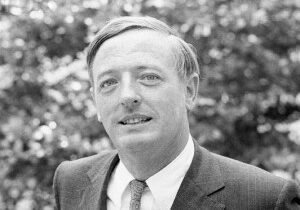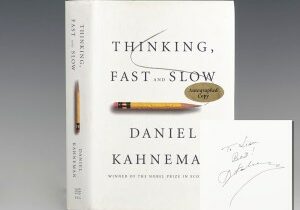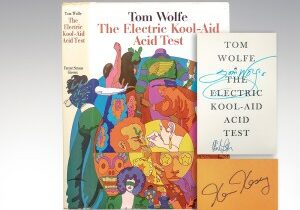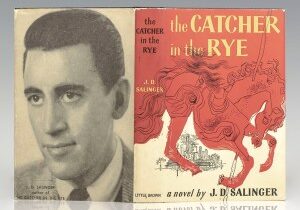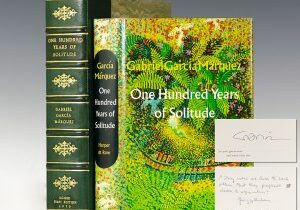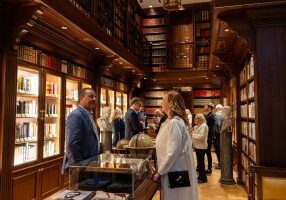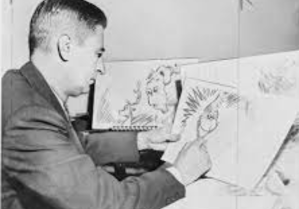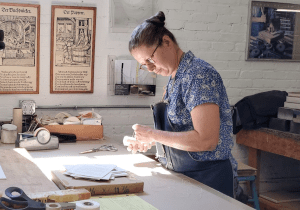The author of such notable books as Mrs. Dalloway and To the Lighthouse, English writer Virginia Woolf is an established name in the realm of fiction. A pioneer in the use of stream of consciousness as a narrative device, her unique style and method of storytelling has distinguished her as one of the more important 20th century novelists.
Born into an affluent Victorian household, Virginia grew up surrounded by the arts. Her father was the editor for the Dictionary of National Biography and her mother was well-connected in the artistic and creative community. Her love for writing was apparent at an early age with the creation of a family a newspaper, but Woolf would begin a battle with depression when three of her family members, including her parents, died over the course of nine years.
Woolf ceased writing during an intense period of mourning but soon after started on the journey to become one of the most notable avant-garde writers of the 20th century.

“What Does The Brain Matter Compared With The Heart?”: First Edition Of Virginia Woolf’s Mrs. Dalloway; In The Rare Original Dust Jacket.
One of Woolf’s best-known novels, Mrs. Dalloway tells the story of two interesting and complex characters. One: a sensitive woman, and the other, a survivor of the war. In an attempt to describe the coexististence of the sane and the insane, Woolf weaves their thoughts and feelings together like a composer would a symphony. It was with this singular novel that Woolf established herself as one of the most inventive writers of the 20th century.
“In Mrs. Dalloway Woolf breaks decisively with the fictional conventions of the realistic novel. The technique is almost orchestral, introducing and then interweaving the strains of the different characters’ thoughts, and finally engineering, through a subtle sequence of readjustments and realignments, a new and delicate harmony between them at the close of the book. Mrs. Dalloway thus initiated Woolf’s sequence of radical experiments with literary form, embodying a striking combination of fluid sympathy and secret resistance. Through the novel’s rapid transitions between apparently disconnected, but secretly related stories, Woolf was able to suggest the hazards of neatly pigeonholing human character according to social situation or gender” (Parker, 110-11).

“And All The Lives We Ever Lived And All The Lives To Be Are Full Of Trees And Changing Leaves”: First Edition Of Virginia Woolf’s To The Lighthouse; In The Rare Original Dust Jacket.
Woolf’s other famous book To The Lighthouse, published two years after Mrs. Dalloway, also gathered much attention and praise for its stylistic writing. Throughout the work, Woolf showcases the passage of time in relation to one family and one lighthouse through the use of seaside imagery and the portrayal of lingering childhood nostalgia. To the Lighthouse “displays Woolf’s technique of narrating through stream of consciousness and imagery at its most assured, rich, and suggestive” (Drabble, 990).
“In its portrayal of life… it gives us an interlude of vision that must stand at the head of all Virginia Woolf’s work” (New York Times). To the Lighthouse was “written at the height of her luminous Impressionist vision… It is the sunniest of her books and shows the obsession with rendering the passage of time which dominated her later work. With her prosperous upper middle class academic background of the late Victorian establishment, Virginia Woolf is always walking a tight-rope in her desire to get away from it and portray ordinary people as a novelist should, hence the mixture of respect and irony with which she surveys its security and solid values” (Connolly).

“Would There Be Trees If We Didn’t See Them?”: First Edition Of Virginia Woolf’s The Years, Inscribed By Her To Clive Bell.
Virginia Woolf’s longest and most memorable novel of her later years was her book The Years. At the time of publication, The Years became a very anticipated release and went on to gather positive reviews by readers and critics alike. Although it took the Woolf the longest to write, it became a masterpiece in its own right. This particular copy was inscribed by the author to her friend Clive Bell, her sister Vanessa’s husband and an art critic of the time, whose criticism Woolf feared while writing the book.
Virginia must have inscribed this copy with some trepidation, having agonized for several years over the text of the novel, “I wonder if anyone has ever suffered so much from a book as I have from The Years” (Diary 5:31), and retaining, sometimes against her better judgement, a need to justify herself and her work to Bell, a friend (and brother-in-law) for thirty years by the time of the publication of The Years. In 1919 she wrote, “in a way that I can’t defend to Leonard, I do respect Clive’s judgement. It’s erratic, but always springs from a direct feeling”, and she maintained a close relationship with him throughout her life.
Inscribed copies of The Years are rare, and this, sent to such a close friend, is a particularly remarkable find.

“As Long As She Thinks Of A Man, Nobody Objects To A Woman Thinking”: Signed Limited Edition Of Virginia Woolf’s Orlando; Signed By Her And From The Collection Of American Journalist Bill Safire.
In addition to her other notable works, Virginia Woolf’s bibliography also incudes the Feminist classic Orlando: A Biography. This particular copy, one of 800 printings, is from the collection of American journalist William Safire, notably a member of Richard Nixon’s presidential campaigns in both 1960 and 1968.
Arguably one of Woolf’s most popular novels, Orlando describes the adventures of a poet who changes sex from man to woman and lives for centuries, meeting the key figures of English literary history. Considered a feminist classic, the book has been written about extensively by scholars of women’s writing and gender and transgender studies and has been adapted a number of times for stage and screen.
Read more about the works of Virginia Woolf currently in our collection here. Visit our 329 Worth Avenue gallery to view the works featured above as well as a wide variety of notable authors of the 20th century.

